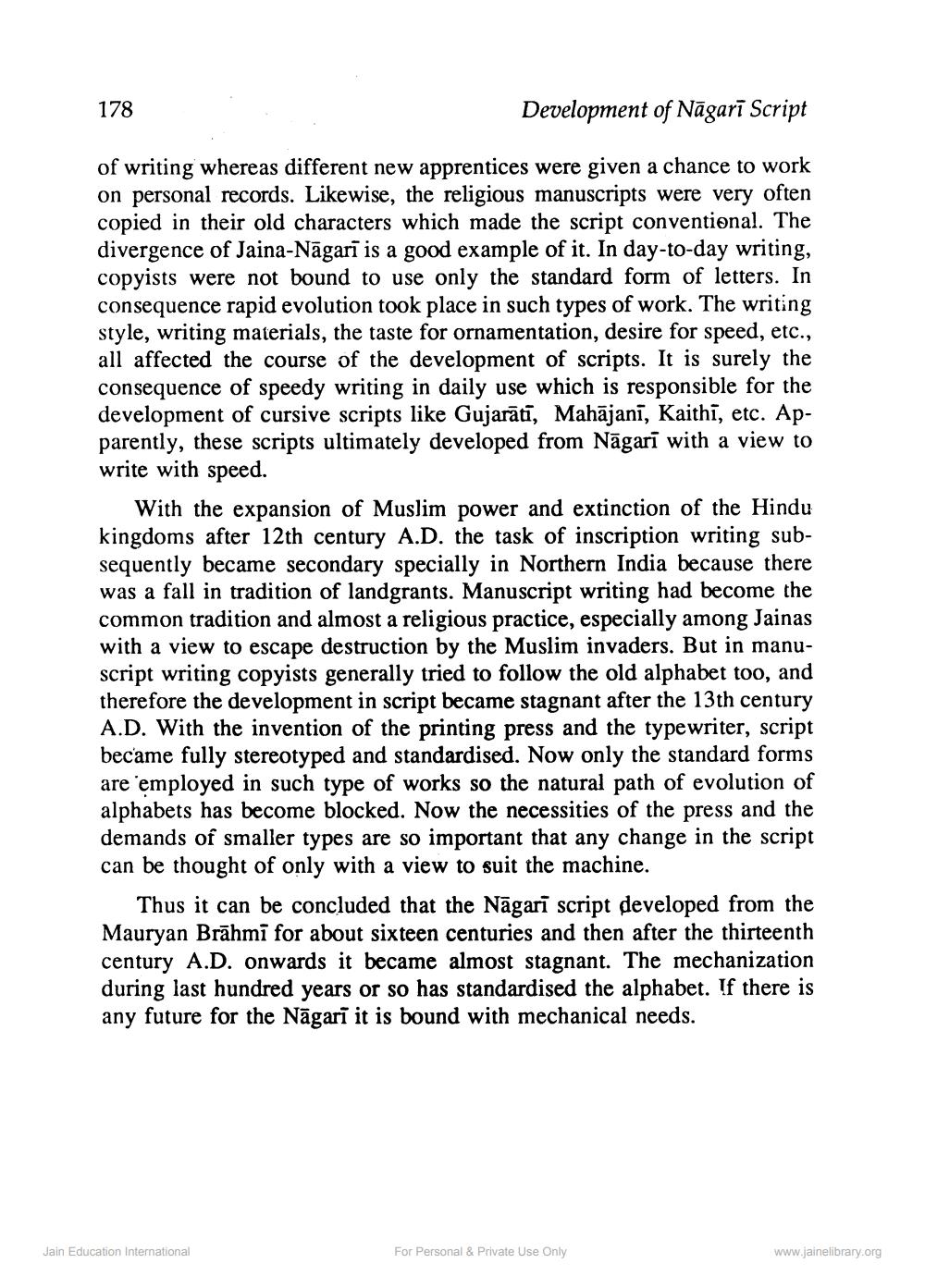________________
178
Development of Nāgarī Script
of writing whereas different new apprentices were given a chance to work on personal records. Likewise, the religious manuscripts were very often copied in their old characters which made the script conventional. The divergence of Jaina-Nāgarī is a good example of it. In day-to-day writing, copyists were not bound to use only the standard form of letters. In consequence rapid evolution took place in such types of work. The writing style, writing materials, the taste for ornamentation, desire for speed, etc., all affected the course of the development of scripts. It is surely the consequence of speedy writing in daily use which is responsible for the development of cursive scripts like Gujarātī, Mahājanī, Kaithi, etc. Apparently, these scripts ultimately developed from Nāgarī with a view to write with speed.
With the expansion of Muslim power and extinction of the Hindu kingdoms after 12th century A.D. the task of inscription writing subsequently became secondary specially in Northern India because there was a fall in tradition of landgrants. Manuscript writing had become the common tradition and almost a religious practice, especially among Jainas with a view to escape destruction by the Muslim invaders. But in manuscript writing copyists generally tried to follow the old alphabet too, and therefore the development in script became stagnant after the 13th century A.D. With the invention of the printing press and the typewriter, script became fully stereotyped and standardised. Now only the standard forms are employed in such type of works so the natural path of evolution of alphabets has become blocked. Now the necessities of the press and the demands of smaller types are so important that any change in the script can be thought of only with a view to suit the machine.
Thus it can be concluded that the Nāgarī script developed from the Mauryan Brāhmi for about sixteen centuries and then after the thirteenth century A.D. onwards it became almost stagnant. The mechanization during last hundred years or so has standardised the alphabet. If there is any future for the Nāgari it is bound with mechanical needs.
Jain Education International
For Personal & Private Use Only
www.jainelibrary.org




